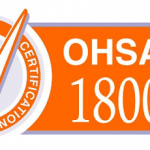ESG Reporting
What is Sustainability / ESG reporting?
A sustainability / ESG report is a report published by a company or organization about the environmental, social and governance (ESG) impacts caused by its daily activities. It:
- Presents the organization’s values and governance model and demonstrates the link between its strategy and its commitment to a sustainable global economy.
- Helps organizations to measure, understand and communicate their economic, environmental, social and governance performance, and then set goals, and manage change more effectively.
- Is a key platform for communicating sustainability performance and impacts.
Drivers and challenges with ESG reporting
Transforming the way we address our ESG challenges is high on everyone’s agenda; from achieving net zero, pollution reduction, environmental regeneration, to employees’ well-being, sustainable supply chain and community engagement.
For organizations of any size, sustainability reporting offers various internal and external benefits. Consumers are more environmentally conscious with their purchases including the impact on the environment, society and human rights.
In some countries, it is required by the stock exchange for public listed organizations to report their ESG performance. ESG reporting has an impact on an organization’s financial performance, investors’ confidence and also consumers’ confidence.
Below are some of the challenges and questions organizations would need to consider:
- Many organizations do not know which reporting metrics to use.
- How to determine your material topics?
- How to ensure transparency and accuracy of data collection?
- What is required to create an efficient and reliable process?
- How do you validate your report and ensure the credibility of your ESG reporting?
- How do you ensure inclusivity of your ESG reporting to ensure it is not distorted?
- How do you respond to greenwashing attacks?
How can AV support your organization with our comprehensive Sustainability / ESG reporting solutions?
AV can support your organization regardless of size, to achieve your sustainability goals and along your ESG reporting journey (a process carried out in agreement to international standards such as Global Reporting Initiative (GRI)), starting from training gap analysis and capacity building to verification and validation of your ESG report.
GRI Training
Gap Analysis & Capacity Building
Independent Verification
Step 1: GRI certified training for ESG reporting
What is the course content?
The BSI GRI training course is interactive and includes sharing of best practices and case studies. Upon completion of this course, you will be able to:
- Discuss the fundamentals of Sustainable Development and Reporting
- Understand the GRI Standards and the reporting process requirements
- Conduct materiality assessments and stakeholder engagements
- Develop a sustainability report and build systems and processes to manage the same consistently
| S.No | Agenda | Content |
|---|---|---|
| PART 01 | Introduction | 1.1 Practical information 1.2 Learning objectives |
| PART 02 | Overview of the GRI Standards | 2.1 Useful terminology 2.2 Sustainability reporting 2.3 Introduction to the GRI Standards 2.4 Structure of the GRI Standards 2.5 How to use the GRI Standards |
| PART 03 | The GRI Standards | 3.1 GRI 1: Foundation 2021 3.2 GRI 2: General Disclosures 2021 3.3 GRI 3: Material Topics 2021 3.4 GRI Sector Standards 3.5 GRI Topic Standards |
| PART 04 | Start your reporting process using the GRI Standards | 4.1 How to apply in accordance requirements 4.2 How to apply the reporting principles 4.3 How to determine material topics 4.4 How to report general disclosures 4.5 How to report material topics 4.6 How to present reported information |
| PART 05 | Conclusion | 5.1 Summary 5.2 What’s next? |
Step 2: Gap Analysis and Capacity Building
- Our experts could help you with identification and analysis of what needs improvement for your ESG performance.
- We could work with you on your corporate sustainability strategy, compliance with regulators’ requirements and alignment with UNSDGs which comprises of a series of training and gap assessment.
Step 3: Standards To Support Corporate Sustainability
Sustainable Leather Foundation (SLF)
| Environmental Module | Social Module | Governance Module |
|---|---|---|
|
|
|


